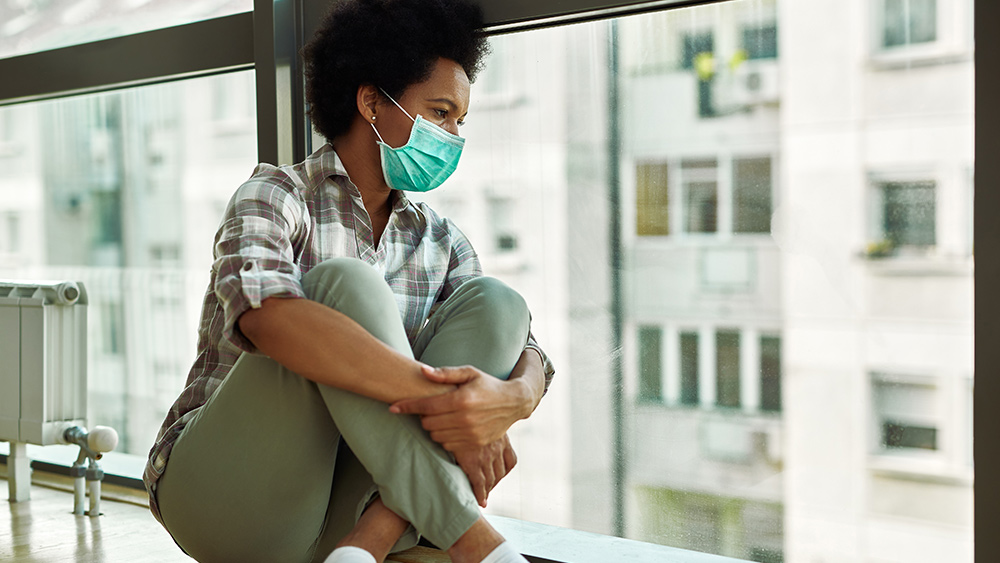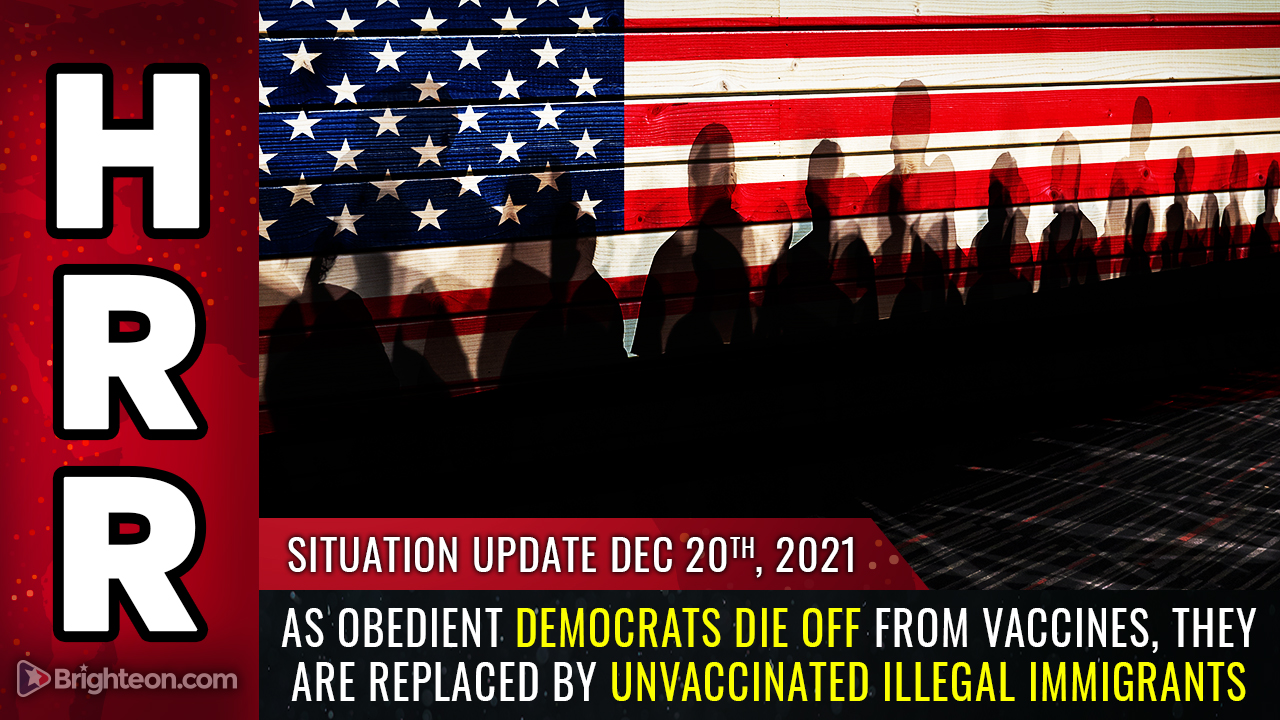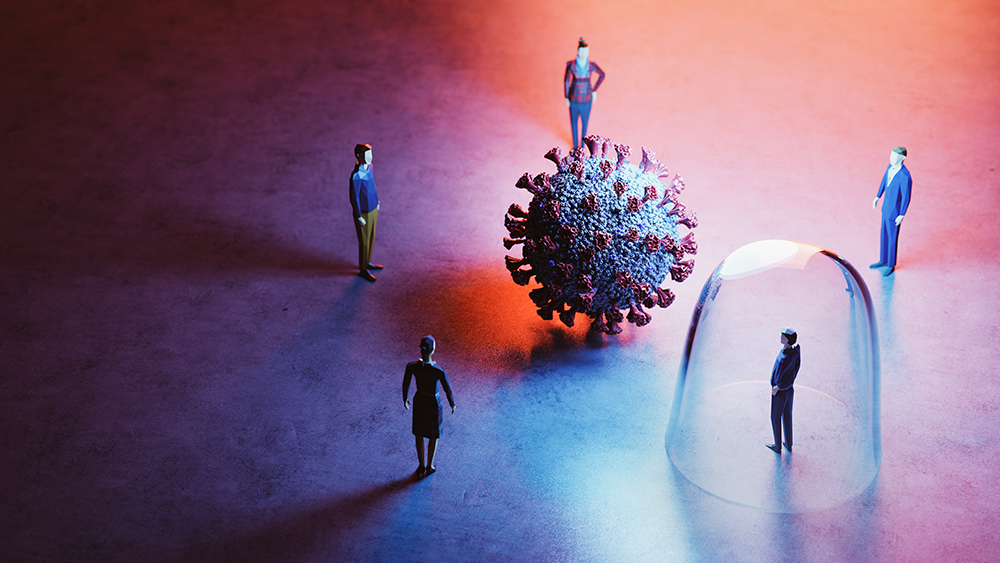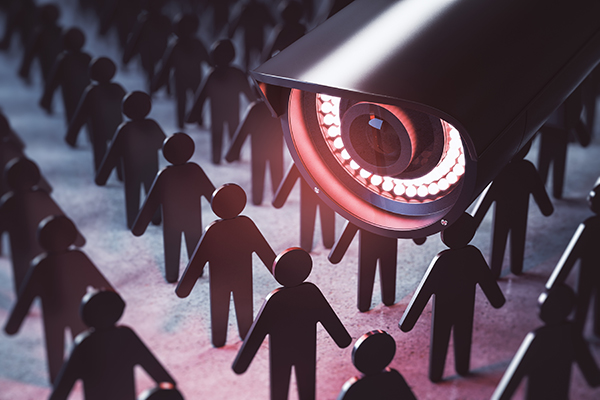Lockdowns, mask mandates do far more harm than good
08/03/2021 / By Nolan Barton

The oppressive government lockdowns during the coronavirus (COVID-19) pandemic caused a dramatic rise in mental health issues. Healthy people confined to their homes with limited to no human contact are likely to experience severe strain on their mental health.
While the virus itself has a low fatality rate for most demographics, lockdowns can push people of all ages over the brink.
After the Centers for Disease Control and Prevention (CDC) revised its guidelines for vaccinated people, many local and state governments nationwide brought back mask mandates and restrictions for many Americans. Lockdowns may soon follow.
People, vaccinated or not, must now wear masks in all indoor public spaces. Masks don’t work and diagnosed cases rise in many locations after mask mandates. Cloth masks, which are what most people wear, experience particle penetration of 97 percent. Surgical masks experience particle penetration of 44 percent.
The only masks scientifically proven to provide defense against COVID-19 are properly fitted and worn N95 masks. However, masks also lead to increased levels of inhaled carbon dioxide. As a result, roughly a third of hospital workers report headaches with long-term use of N95 masks.
On Sept. 11 last year, the CDC’s Morbidity and Mortality Weekly Report showed that 85 percent of those who contracted COVID in July 2020 always wore a mask when out in public or often wore one the two weeks before their infection.
Some excess deaths are related to lockdowns
Excess mortality remains the best gauge of the pandemic’s impact. It compares the overall number of deaths with the total in previous years. That measure rose among older Americans because of COVID-19, but it rose at an even sharper rate among people aged 15 to 54, and most of those excess deaths were not attributed to the virus. (Related: Study: Lockdowns have led to an increase in excess mortality.)
While some of those deaths could be undetected COVID-19 cases, and some could be unrelated to the pandemic or the lockdowns, preliminary reports point to some obvious lockdown-related factors.
There was a sharp decline in visits to emergency rooms and an increase in fatal heart attacks due to failure to receive prompt treatment. A lot fewer people were screened for cancer and social isolation contributed to excess deaths from dementia and Alzheimer’s.
Researchers predicted that the social and economic upheaval would lead to tens of thousands of “deaths of despair” from drug overdoses, alcoholism and suicide.
As unemployment surged and mental-health and substance-abuse treatment programs were interrupted, the reported levels of anxiety, depression and suicidal thoughts increased dramatically, as did alcohol sales and fatal drug overdoses.
The number of people killed last year in motor-vehicle accidents in the U.S. rose to the highest level in more than a decade, even though Americans did significantly less driving than in 2019. It was the steepest annual increase in the fatality rate per mile traveled in nearly a century, apparently due to more substance abuse and more high-speed driving on empty roads.
The number of excess deaths not involving COVID-19 has been especially high in U.S. counties with more low-income households and minority residents. Nearly 40 percent of workers in low-income households lost their jobs during the spring, which is three times the rate in high-income households.
Lockdowns create more damage than COVID-19 itself
The effects of lockdowns are also felt in countries with low COVID-19 infection and death rates.
In Australia, citizens were forced back into lockdown with even harsher restrictions despite infection and death rates that are much lower compared to other developed nations. The recent highly policed lockdowns in the country have fueled anger and given rise to anti-lockdown demonstrations.
New South Wales Police recruited 300 military personnel to enforce the lockdowns. Australian authorities recently imposed harsher restrictions in Sydney, forcing people to wear masks outdoors and go no further than three miles from their homes.
In Queensland, citizens aren’t allowed to go out on their balconies and they need to tape them shut in the fight against COVID. Jeanette Young, chief health officer of Queensland, issued an order requiring photographic proof that residents with balconies have done so.
Two hundred fourteen people were recently forced into quarantine in Adelaide, Australia simply because one individual ended up sick in a hospital. A grand total of four people have died because of COVID-19 in Adelaide since last year.
Now, mental health is quickly becoming Australia’s biggest problem.
A recent survey shows that one in four Australians is struggling with mental health issues. Other findings reveal that one in five Australians is experiencing high levels of anxiety and stress directly linked to the pandemic.
Since its initial outbreak, the pandemic has profoundly affected the global community. The implementation of strict quarantine and lockdown measures has disrupted social networks and devastated the global economy. There is a rising concern that the pandemic has taken a toll on the general population’s mental health.
Many studies show that there has been an increased prevalence of depression and anxiety disorders, suicide risk, post-traumatic stress symptoms (PTSS) and insomnia. (Related: Extended coronavirus lockdowns having severe negative effect on mental health of children – report.)
Longer quarantine duration is associated with post-traumatic stress disorder (PTSD), avoidance behaviors and anger. Poor information from public health authorities, confusion about the purpose of quarantine and lack of transparency from health and government officials are also contributing to the problem.
Follow Pandemic.news for more news and information related to the coronavirus pandemic.
Sources include:
Tagged Under: Anxiety, anxiety disorders, coronavirus, covid-19, depression, lockdown, mental health, pandemic, PTSD, substance abuse, suicidal thoughts
RECENT NEWS & ARTICLES
COPYRIGHT © 2017 HEALTH FREEDOM NEWS





















